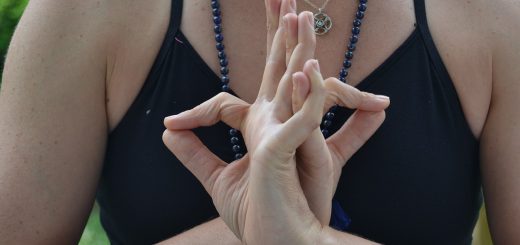Somatic Experiencing: Yoga for Trauma Release

Hey there, amazing readers! 🖐️ Just a quick note: yes, we know there are a lot of ads here. Trust us, we get it—it’s not the prettiest look, but they help us keep this blog alive and kicking. Those pesky little ads cover the costs of all the behind-the-scenes magic, from hosting and tech stuff to creating content we hope you’ll love.
We’re committed to delivering quality posts, and your support (even just sticking around despite the ads) means everything to us. So, bear with us, and thanks for helping us keep the good vibes rolling. Now, on to the fun stuff! 😉
TRANSLATE BUTTON AT THE END OF THE ARTICLE
A Quick Overview
Trauma can have a profound impact on individuals, affecting not only their mental well-being but also manifesting physically in the body.
Somatic Experiencing is a therapeutic approach that recognizes the connection between trauma and the body, offering a unique way to address and release trauma.
By incorporating elements of yoga into this therapy, individuals can engage in practices that promote healing and release pent-up tension stored in the body.
This article delves into the world of Somatic Experiencing and how yoga can be utilized as a powerful tool for trauma release.
Understanding Trauma and Its Effects on the Body
Trauma is a deeply distressing or disturbing experience that can overwhelm an individual’s ability to cope, leaving lasting imprints on both the mind and body.
When faced with trauma, the body’s natural response is to enter a state of heightened arousal, often referred to as the fight-or-flight response.
This can lead to the activation of the sympathetic nervous system, causing physical symptoms such as increased heart rate, muscle tension, and shallow breathing.
Over time, if the trauma remains unresolved, these physical manifestations can become chronic, contributing to a range of health issues.
What is Somatic Experiencing Therapy?
Somatic Experiencing is a body-oriented therapy developed by Dr.
Peter Levine that aims to address trauma by focusing on bodily sensations and experiences.
Unlike traditional talk therapy, Somatic Experiencing recognizes that trauma is stored in the body and can be released through physical sensations.
By guiding individuals through their bodily experiences in a safe and controlled manner, practitioners help them release pent-up energy associated with trauma, allowing the body to return to a state of balance and regulation.
The Connection Between Trauma and the Body
The mind-body connection is at the core of Somatic Experiencing, highlighting how trauma can manifest physically in the body.
When an individual experiences trauma, the body’s natural response is to protect itself by storing the unprocessed energy from the traumatic event.
This stored energy can lead to physical symptoms such as chronic pain, digestive issues, and tension in the body.
By addressing these physical manifestations through Somatic Experiencing, individuals can release the trapped energy and move towards healing.
Benefits of Using Yoga for Trauma Release
Yoga is a mind-body practice that combines physical postures, breathwork, and meditation to promote overall well-being.
When used in conjunction with Somatic Experiencing, yoga can enhance the process of trauma release by providing individuals with tools to regulate their nervous system and release tension stored in the body.
The benefits of using yoga for trauma release include:
Increased body awareness
Improved emotional regulation
Enhanced sense of control
Reduction in physical symptoms of trauma
Promotion of relaxation and stress relief
How Somatic Experiencing Differs From Traditional Therapy
Traditional therapy often focuses on exploring and processing trauma through verbal communication.
In contrast, Somatic Experiencing emphasizes the body’s role in trauma release, using physical sensations and experiences as a gateway to healing.
While traditional therapy can be effective for some individuals, Somatic Experiencing offers a unique approach that targets the physiological aspects of trauma, providing a holistic way to address both the emotional and physical effects of traumatic experiences.
Incorporating Mindfulness in Trauma Healing
Mindfulness is a key component of both yoga and Somatic Experiencing, encouraging individuals to stay present and aware of their bodily sensations without judgment.
By incorporating mindfulness practices into trauma healing, individuals can cultivate a sense of grounding and safety, allowing them to process their experiences in a more regulated manner.
Mindfulness techniques such as body scans, mindful breathing, and grounding exercises can help individuals stay connected to the present moment and reduce reactivity to traumatic triggers.
The Role of Breathwork in Somatic Experiencing
Breathwork is a fundamental aspect of Somatic Experiencing, as it helps individuals regulate their nervous system and release stored tension in the body.
By focusing on the breath, individuals can activate the parasympathetic nervous system, promoting relaxation and reducing the intensity of trauma-related symptoms.
Breathwork techniques such as deep breathing, diaphragmatic breathing, and alternate nostril breathing can be powerful tools for individuals undergoing Somatic Experiencing therapy.
Techniques Used in Somatic Experiencing Sessions
During Somatic Experiencing sessions, practitioners guide individuals through a series of techniques designed to help release trapped energy and regulate the nervous system.
These techniques may include:
Pendulation: Shifting attention between sensations of safety and discomfort to build tolerance.
Titration: Breaking down overwhelming experiences into smaller, manageable pieces.
Resourcing: Cultivating internal and external sources of support to regulate the nervous system.
Grounding: Connecting with the present moment and the environment to feel safe and secure.
Integrating Yoga Poses for Trauma Release
Yoga poses, or asanas, can be integrated into Somatic Experiencing sessions to facilitate the release of tension stored in the body.
Certain yoga poses are particularly effective for trauma release, as they help individuals connect with their bodily sensations and release pent-up energy.
Poses such as Child’s Pose, Legs-Up-the-Wall, and Corpse Pose can promote relaxation, grounding, and release, allowing individuals to experience a sense of safety and regulation during the healing process.
Empowering Individuals Through Somatic Experiencing
Somatic Experiencing empowers individuals to take an active role in their healing process by providing them with tools to regulate their nervous system and release trauma from the body.
By reconnecting with their bodily sensations and experiences, individuals can reclaim a sense of agency and control over their lives.
Somatic Experiencing encourages individuals to trust their innate capacity for healing and resilience, fostering a sense of empowerment and self-efficacy in the face of trauma.
Research and Studies Supporting Somatic Experiencing
Research studies have demonstrated the effectiveness of Somatic Experiencing in treating trauma-related symptoms and promoting overall well-being.
Studies have shown that Somatic Experiencing can lead to significant reductions in symptoms of post-traumatic stress disorder (PTSD), anxiety, and depression.
Additionally, research has highlighted the positive impact of Somatic Experiencing on physiological measures such as heart rate variability and cortisol levels, indicating its ability to regulate the body’s stress response and promote resilience in the face of trauma.
Finding a Qualified Somatic Experiencing Practitioner
When seeking a Somatic Experiencing practitioner, it is advisable to look for individuals who have completed an accredited training program in Somatic Experiencing and have received certification from the Somatic Experiencing Trauma Institute.
Qualified practitioners should have a deep understanding of trauma and the body, as well as experience working with individuals who have experienced trauma.
It is important to find a practitioner who creates a safe and supportive environment for healing and demonstrates a compassionate and non-judgmental approach to trauma therapy.
By finding a qualified Somatic Experiencing practitioner, individuals can embark on a journey towards healing and trauma release.
Conclusion
In conclusion, Somatic Experiencing offers a transformative approach to trauma healing by recognizing the connection between trauma and the body.
By incorporating elements of yoga into this therapy, individuals can engage in practices that promote healing, release trapped energy, and regulate the nervous system.
Through techniques such as breathwork, mindfulness, and yoga poses, individuals can empower themselves to release trauma from the body and move towards a sense of balance and well-being.
Finding a qualified Somatic Experiencing practitioner is essential for individuals seeking to embark on a journey of healing and trauma release.
With its holistic and body-oriented approach, Somatic Experiencing provides a powerful tool for individuals to reclaim agency over their lives and experience profound healing.

The Enlightenment Journey is a remarkable collection of writings authored by a distinguished group of experts in the fields of spirituality, new age, and esoteric knowledge.
This anthology features a diverse assembly of well-experienced authors who bring their profound insights and credible perspectives to the forefront.
Each contributor possesses a wealth of knowledge and wisdom, making them authorities in their respective domains.
Together, they offer readers a transformative journey into the realms of spiritual growth, self-discovery, and esoteric enlightenment.
The Enlightenment Journey is a testament to the collective expertise of these luminaries, providing readers with a rich tapestry of ideas and information to illuminate their spiritual path.
Our Diverse Expertise 🌟
While our primary focus is on spirituality and esotericism, we are equally passionate about exploring a wide range of other topics and niches 🌍📚. Our experienced team is dedicated to delivering high-quality, informative content across various subjects ✨.
To ensure we provide the most accurate and valuable insights, we collaborate with trusted experts in their respective domains 🧑🏫👩🏫. This allows us to offer well-rounded perspectives and knowledge to our readers.
Our blog originally focused on spirituality and metaphysics, but we’ve since expanded to cover a wide range of niches. Don’t worry—we continue to publish a lot of articles on spirituality! Frequently visit our blog to explore our diverse content and stay tuned for more insightful reads.





